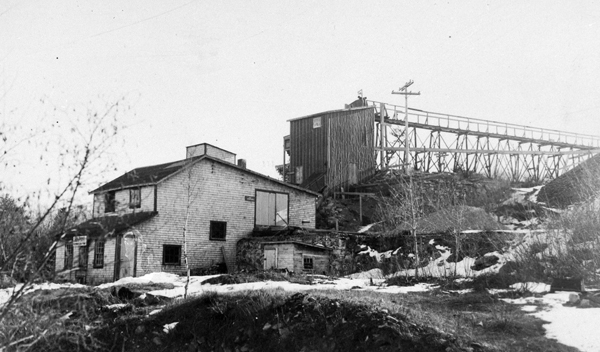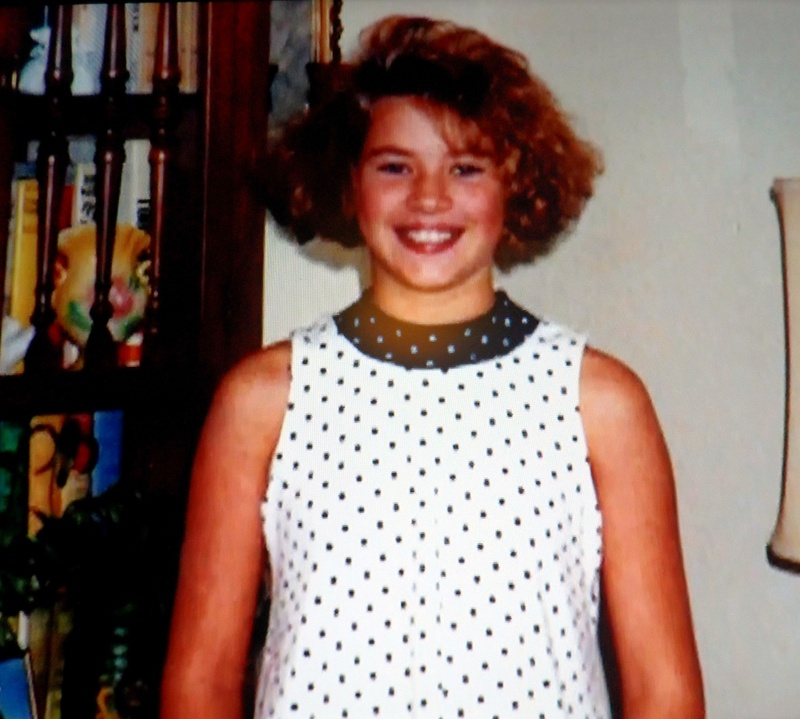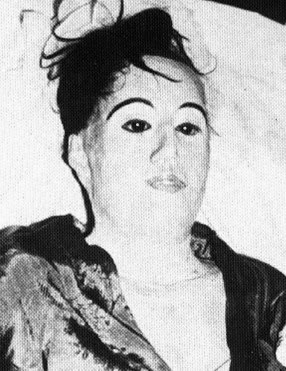
The Iran-Iraq War, also called the First Persian Gulf War, or the Imposed War in Iran, was a war between the armed forces of Iraq and Iran lasting from September 1980 until August 1988. It was commonly referred to as the (Persian) Gulf War until the Iraq-Kuwait conflict (1990–91), which became known as the Second Persian Gulf War and later simply the Persian Gulf War.
The war began when Iraq invaded Iran on September 22, 1980, following a long history of border disputes. The conflict saw early successes by the Iraqis, but before long they were repulsed and the conflict stabilized into a long war of attrition. The United Nations Security Council called upon both parties to end the conflict on multiple occasions, but a ceasefire was not agreed to until August 20, 1988, and the last prisoners of war were not exchanged until 2003. The war irrevocably altered politics in the area, playing into wider global politics and leading to the 1990 Iraqi invasion of Kuwait. Iran saw the war as an opportunity to export its Islamic revolution to Iraq, where the majority of the population share their version of Shi’a Islam, although they also offered their new regime as a model to the Sunni world.
During the war, Iraq’s dictator, Saddam Hussein enjoyed the West’s support, especially that of the United States, called “great Satan” by the Iranians. This support enabled Iraq to develop its chemical warfare capability. The way in which the international community responded, however, has been criticized. Following the collapse of his regime during 2003, Saddam Hussein was found guilty of war crimes against his own people during the course of this war. He was executed in December 2006. America’s engagement in the war does not appear to have aimed to reconcile the two protagonists but to have favored Iraq. As long as two problematic regimes were fighting each other, United Nations intervention was minimal but as soon as Iraq invaded another oil rich state allied with the West, military action followed immediately.
Critics have pointed out how UN intervention in many situations where Western powers (who command three out of five permanent seats on the Security Council) have no particular strategic or economic interests, such as in Bosnia or East Timor, has been much slower. Where no interests exist, the policy seems to be to let the problem solve itself by allowing the stronger side to win. In the case of the Iran-Iraq war, neither side won and only tragic loss of life resulted.
Background
Although the Iran-Iraq war of 1980–1988 was a war over dominance of the Persian Gulf region, the roots of the war go back many centuries. Conflict between the various dynasties that have controlled what is now Iraq, which was for centuries part of a larger Sunni Islamic empire, and Iran (Persia), has ancient foundations, dating at least from Muhammad’s rivalry with Persia and from its later conversion to Shi’a Islam. On the other hand, the modern state of Iraq was created by the French and British after the end of World War I and neither its borders nor its population correspond to historical predecessors.
More precisely, the origins of the Iran-Iraq war of 1980–1988 go back to the question of sovereignty over the resource-rich province of Khuzestan. Khuzestan, home to Iran’s Elamite Empire, was an independent non-Semitic speaking kingdom whose capital was Susa. Khuzestan has, however, been attacked and occupied by various kingdoms of Mesopotamia (the precursors of modern Iraq) many times.
On December 18, 1959, Abdul Karim Qassim, who had just taken control over Iraq by a coup d’etat, openly declared: “We do not wish to refer to the history of Arab tribes residing in Al-Ahwaz and Mohammareh [Khorramshahr]. The Ottomans handed over Mohammareh, which was part of Iraqi territory, to Iran.” The Iraqi regime’s dissatisfaction over Iran’s possession of oil-rich Khuzestan province was not limited to rhetorical statements; Iraq started supporting secessionist movements in Khuzestan, and even raised the issue of its territorial claims in the next meeting of the Arab League, without any success. Iraq showed reluctance in fulfilling existing agreements with Iran, especially after the death of Egyptian President Gamal Nasser and the rise of the Ba’ath Party, when Iraq decided to take on the role of “leader of the Arab world.”
In 1969, the deputy prime minister of Iraq openly declared, “Iraq’s dispute with Iran is in connection with Arabistan [Khuzestan] which is part of Iraq’s soil and was annexed to Iran during foreign rule.” Soon Iraqi radio stations began exclusively broadcasting into “Arabistan,” encouraging Iranian Arabs and even Baluchis to revolt against Iran’s central government. Basra TV stations even started showing Iran’s Khuzestan province as part of Iraq’s new province called Nassiriyeh, renaming all Iranian cities with Arabic names.
In 1971, Iraq broke off diplomatic relations from Iran after claiming sovereignty rights over the islands of Abu Musa, Greater Tunb, and Lesser Tunb in the Persian Gulf, following the withdrawal of the British. Iraq then expelled 70,000 Iranians from its borders after complaining to the Arab League, and the UN, without any success.
One of the factors contributing to hostility between the two powers was a dispute over full control of the Shatt al-Arab waterway at the head of the Persian Gulf, an important channel for the oil exports of both countries. In 1975, America’s Henry Kissinger had sanctioned that Mohammad Reza Pahlavi, the Shah of Iran, attack Iraq over the waterway, which was under Iraqi control at the time; soon afterward both nations signed the Algiers Accord, in which Iraq made territorial concessions, including the waterway, in exchange for normalized relations.
Iraq had staged a battle against Iranian forces a year earlier in 1974, resulting in heavy casualties on both sides. Iran attempted to destabilize Iraq and encouraged Kurdish nationalists to break up the country, in answer to Iraq’s similar activities in Iran’s Khuzestan province. Iran’s embassy in London was even attacked by Iraqi terrorist forces a few months before the war in 1980, in what came to be known as The Iranian Embassy Siege.
Iraq’s president, Saddam Hussein, was eagerly interested in elevating Iraq to a strong regional power. A successful invasion of Iran would make Iraq the dominating force in the Persian Gulf region and its lucrative oil trade. Such lofty ambitions were not that far-fetched. Severe officer purges (including several executions ordered by Sadegh Khalkhali, the post-revolution Sharia ruler) and spare part shortages for Iran’s American-made equipment had crippled Iran’s once mighty military. The bulk of the Iranian military was made up of poorly armed, though committed, militias. Iran had minimal defenses in the Arvand/Shatt al-Arab river.
The aftermath of the Iranian Revolution of 1979 was central to the conflict. The Ayatollah Ruhollah Khomeini was threatening to export Islamic revolution to the rest of the Middle East, even though Iran was hardly in any position to do so militarily, for most of the Shah’s army had already been disbanded. The Khomeinist camp despised Iraq’s Ba’athist secularism in particular, and believed that the oppressed Shi’ites in Iraq, Saudi Arabia, and Kuwait could follow the Iranian example and turn against their governments. Just as the Shah had been overthrown, and his autocratic government replaced with an Islamic system, so could kings and dictators in the Sunni world. At the same time, the revolution in Iran, the destabilization of the country, and its alienation from the West made it a tempting target to the expansionist Saddam Hussein. In particular he felt that Iranian Sunni citizens would rather join a powerful Sunni-led Iraq than remain in the Shi’a dominated Iran.
Thus both sides entered the war believing that citizens of the southern portions of the enemy’s country—Sunnis in Iran and Shi’a in Iraq—would join the opposing forces. Neither seems to have fully appreciated the powers of nationalism over historically clan-centered differences, nor the power of the central state apparatus, who controlled the press. In the end both were surprised to find their expected allies turning against them as invaders.
The UN Secretary General report dated December 9, 1991 (S/23273), explicitly states “Iraq’s aggression against Iran” in starting the war and breaching International security and peace.
Invasion and repulse
The two nations severed diplomatic relations in June 1980, and sporadic border clashes increased. On September 17, Iraq declared the Shatt al-Arab part of its territory. Iraq launched a full-scale invasion of Iran on September 22, 1980, using an assassination attempt on Foreign Minister Tariq Azizas a pretext, blaming it on Iran. The surprise offensive advanced quickly against the still disorganized Iranian forces, advancing on a wide front into Iranian territory along the Mehran-Khorramabad axis in Central Iran and towards Ahvaz in the oil-rich southern province of Khuzestan.
Iraq encountered unexpected resistance, however. Rather than turning against the Ayatollah’s government as exiles had promised, the people of Iran rallied around their revolution and mounted far stiffer resistance; an estimated 100,000 volunteers arrived at the front by November. An Iraqi Air Force attack on Iranian airfields was ineffectual, and the Iraqis soon found the Iranian military was not nearly as depleted as they had thought. In June of 1982, a successful Iranian counter-offensive recovered the areas previously lost to Iraq.
Most of the fighting for the rest of the war occurred on Iraqi territory, although some have interpreted the Iraqi withdrawal as a tactical ploy by the Iraqi military. By fighting just inside Iraq, Saddam Hussein could rally popular Iraqi patriotism. The Iraqi army could also fight on its own territory and in well-established defensive positions. The Iranians continued to employ unsophisticated human wave attacks, while Iraqi soldiers remained, for the most part, in a defensive posture.
Iraq offered a cessation of hostilities in 1982, but Iran’s insistence from July 1982 onward to destroy the Iraqi government prolonged the conflict for another six years of static warfare.
The Tanker War and U.S. entanglement
The United States had been wary of the Tehran regime since the Iranian Revolution, not least because of the detention of its Tehran embassy staff in the 1979–81 Iran hostage crisis. Starting in 1982 with Iranian success on the battlefield, the U.S. made its backing of Iraq more pronounced, supplying it with intelligence, economic aid, normalizing relations with the government (broken during the 1967 Six-Day War), and allegedly also supplying weapons.
Starting in 1981, both Iran and Iraq attacked oil tankers and merchant ships, including those of neutral nations, in an effort to deprive the opponent of trade. After repeated Iraqi attacks on Iran’s main exporting facility on Khark Island, Iran attacked a Kuwaiti tanker near Bahrain on May 13, 1984, and a Saudi tanker in Saudi waters on May 16. Attacks on ships of noncombatant nations in the Gulf sharply increased thereafter, and this phase of the war was dubbed the “Tanker War.”
Lloyd’s of London, a British insurance provider, estimated that the Tanker War damaged 546 commercial vessels and killed about 430 civilian mariners. The largest of attacks were directed by Iran against Kuwaiti vessels, and on November 1, 1986, Kuwait formally petitioned foreign powers to protect its shipping. The Soviet Union agreed to charter tankers starting in 1987, and the United States offered to provide protection for tankers flying the U.S. flag on March 7, 1987 (Operation Earnest Will and Operation Prime Chance). Under international law, an attack on such ships would be treated as an attack on the U.S., allowing the U.S. to retaliate militarily. This support would protect ships headed to Iraqi ports, effectively guaranteeing Iraq’s revenue stream for the duration of the war.
An Iraqi plane accidentally attacked the USS Stark, an Oliver Hazard Perry class frigate on May 17, killing 37 and injuring 21. But U.S. attention was on isolating Iran; it criticized Iran’s mining of international waters, and sponsored Security Council Resolution 598, which passed unanimously on July 20, under which it skirmished with Iranian forces. In October 1987, the U.S. attacked Iranian oil platforms in retaliation for an Iranian attack on the U.S.-flagged tanker Sea Isle City.
On April 14, 1988, the frigate USS Samuel B. Roberts was badly damaged by an Iranian mine. U.S. forces responded with Operation Praying Mantis on April 18, the United States Navy’s largest engagement of surface warships since World War II. Two Iranian ships were destroyed, and an American helicopter was shot down, killing the two pilots.
In the course of these escorts by the U.S. Navy, the cruiser USS Vincennes shot down Iran Air Flight 655 with the loss of all 290 passengers and crew on July 3, 1988. The American government claimed that the airliner had been mistaken for an Iranian F-14 Tomcat, and that the Vincennes was operating in international waters at the time and feared that it was under attack. It has since emerged, however, that the Vincennes was in fact in Iranian territorial waters, and that the Iranian passenger jet was turning away and increasing altitude after take-off. The U.S. paid compensation but never apologized.
It has often been suggested that the bombing by Arab terrorists of Pan Am Flight 123 over Lockerbie was a direct retaliation for the shooting down of Iran Air 655.
Through all of this members of the Reagan Administration had, at the same time, also been secretly selling weapons to Iran; first indirectly (possibly through Israel) and then directly. It claimed that the administration hoped Iran would, in exchange, persuade several radical groups to release Western hostages. The money from the sales was channeled to equip the Nicaraguan contra-revolutionaries, right-wing rebels.
War of the Cities and the war’s conclusion
The land war regressed into stalemate. Both Iraq and Iran lacked sufficient self-propelled artillery to support their respective armored forces in assaults. This was made even more important because neither side had the air force capability to support ground forces. When the relatively professional Iraqi armed force advance was halted by the sheer size and commitment of Iranian infantry and the Iranian infantry moved to advance itself; it faced the terrible prospect that the Iraqis had large numbers of towed artillery while the Iranians had comparatively small numbers of towed and even less self-propelled artillery. Artillery was important to force an opponent to disperse, dig in its tanks and permit enemy infantry to take over. Without sufficient artillery, Iranian tanks were vulnerable to Iraqi infantry, artillery, anti-tank missiles and crucially were not able to achieve local force superiority. What followed was a blood bath with the Iranians substituting infantry for artillery. Both sides turned to more brutal weapons and tactics. Iraq’s air force began strategic bombing against Iranian cities, chiefly Tehran, starting in 1985. In response to these, Iran began launching SS-1 “Scud” missiles against Baghdad, and Iraq responded by launching the same against Tehran.
The extreme brutality of the war included the use of chemical weapons, especially tabun, by Iraq. International antipathy to the Tehran regime meant Iraq suffered few repercussions despite these attacks. The UN eventually condemned Iraq for using chemical weapons against Iran, after the war. Chemical weapons had not been used in any major war since World War II.
Iraq financed, with foreign assistance, the purchase of more technologically advanced weapons, and built more modern, well-trained armed forces. After setbacks on the battlefield it offered to return to the 1975 border. Iran was internationally isolated and facing rising public discontent. Finally, a cease-fire was agreed to on August 20, 1988.
Arming the combatants
Iraq’s army was primarily armed with weaponry it had purchased from the Soviet Union and its satellites in the preceding decade. During the war, it purchased billions of dollars worth of advanced equipment from the Soviets and the French, as well as from the People’s Republic of China, Egypt, Germany, and other sources (including European facilities for making and/or enhancing chemical weapons). Germany along with other Western countries (among them the United Kingdom, France, Spain , Italy, and the United States) provided Iraq with biological and chemical weapons technology and the precursors to nuclear capabilities. Much of Iraq’s financial backing came from other Arab states, notably oil-rich Kuwait and Saudi Arabia.
Iran’s foreign supporters included Syria and Libya, through which it obtained Scuds. It purchased weaponry from North Korea and the People’s Republic of China, notably the Silkworm anti-ship missile. Iran acquired weapons and parts for its Shah-era U.S. systems through covert arms transactions from officials in the Reagan Administration, first indirectly (possibly through Israel) and then directly. It was hoped Iran would, in exchange, persuade several radical groups to release Western hostages, though this did not result; proceeds from the sale were diverted to the Nicaraguan Contras in what became known as the Iran-Contra Affair.
Aircraft
During the war, Iran operated U.S.-manufactured F-4 Phantom and F-5 Freedom Fighter fighters, as well as AH-1 Cobra attack helicopters. It also operated a number of F-14 Tomcat fighters, which proved devastating to the Iraqis in the early phases of the war. However, due to the Iranian government’s estrangement, spare parts were difficult to obtain, and many aircraft were cannibalized as the war continued. The few F-14s still flying by the mid-1980s were mostly used for reconnaissance. These were supported by KC-135s, an aerial refueling tanker based on the Boeing 707.
Iraq’s air force used Soviet weapons and reflected Soviet training, although it expanded and upgraded its fleet considerably as the war progressed. It conducted strategic bombing using Tupolev Tu-16 Badgers. Its fighters included the Mikoyan-Gurevich MiG-21, later supplemented by large purchases of Sukhoi Su-22s and French Dassault Mirage F1s. It also deployed the Anglo-French Aérospatiale Gazelle attack helicopter and the Exocet anti-ship missile.
U.S.-Iraqi arms transfers in the war
Donald Rumsfeld met with Saddam on December 19 and 20, 1983. Rumsfeld visited again on March 24, 1984; the same day the United Nations released a report that Iraq had used mustard and Tabun nerve gas against Iranian troops. The New York Times reported from Baghdad on March 29, 1984, that “American diplomats pronounce themselves satisfied with Iraq and the U.S., and suggest that normal diplomatic ties have been established in all but name.”
Western support for Iraq during the Iran-Iraq war has clearly been established. It is no secret that the Soviet Union, West Germany, France, many western companies, and Britain provided military support and even components of Iraq’s Weapons of Mass Destruction program. The role the United States played in the war against Iran however, although minor in comparison, is not as well known.
After the revolution, with the Ayatollahs in power and levels of enmity between Iran and the United States running high, early on during the Iran-Iraq war, real politikers in Washington came to the conclusion that Saddam was the lesser of the two evils, and hence efforts to support Iraq became the order of the day, both during the long war with Iran and afterward. This led to what later became known as the “Iraq-gate” scandals.
Much of what Iraq received from the West, however, were not arms per se, but so-called dual-use technology—mainframe computers, armored ambulances, helicopters, chemicals, and the like, with potential civilian uses as well as military applications. It is now known that a vast network of companies, based in the U.S. and elsewhere, fed Iraq’s warring capabilities right up until August 1990, when Saddam invaded Kuwait. The Iraq-gate scandal revealed that an Atlanta, Georgia branch of Italy’s largest bank, Banca Nazionale del Lavoro, relying partially on U.S. taxpayer-guaranteed loans, funneled $5 billion to Iraq from 1985 to 1989. In August 1989, when Federal Bureau of Investigation (FBI) agents finally raided the Atlanta branch of BNL, the branch manager, Christopher Drogoul, was charged with making unauthorized, clandestine, and illegal loans to Iraq—some of which, according to his indictment, were used to purchase arms and weapons technology.
Beginning in September 1989, the Financial Times laid out the first charges that BNL, relying heavily on U.S. government-guaranteed loans, was funding Iraqi chemical and nuclear weapons work. For the next two and a half years, the Financial Times provided the only continuous newspaper reportage (over 300 articles) on the subject. Among the companies shipping militarily useful technology to Iraq under the eye of the U.S. government, according to the Financial Times, were Hewlett-Packard, Tektronix, and Matrix Churchill, through its Ohio branch
Even before the Persian Gulf War started in 1990, the Intelligencer Journal of Pennsylvania in a string of articles reported, “If U.S. and Iraqi troops engage in combat in the Persian Gulf, weapons technology developed in Lancaster and indirectly sold to Iraq will probably be used against U.S. forces…. And aiding in this …technology transfer was the Iraqi-owned, British-based precision tooling firm Matrix Churchill, whose U.S. operations in Ohio were recently linked to a sophisticated Iraqi weapons procurement network.”
Aside from the New York Times, the Los Angeles Times, and ABC’s Ted Koppel, the Iraq-gate story never picked up much steam, even though The U.S. Congress became involved with the scandal.
In December 2002, Iraq’s 1,200 page Weapons Declaration revealed a list of Western corporations and countries—as well as individuals—that exported chemical and biological materials to Iraq in the past two decades. Many American names were on the list. Alcolac International, for example, a Maryland company, transported thiodiglycol, a mustard gas precursor, to Iraq. A Tennessee manufacturer contributed large amounts of a chemical used to make sarin, a nerve gas implicated in so-called Gulf War Syndrome.
On May 25, 1994, The U.S. Senate Banking Committee released a report in which it was stated that “pathogenic (meaning ‘disease producing’), toxigenic (meaning ‘poisonous’), and other biological research materials were exported to Iraq, pursuant to application and licensing by the U.S. Department of Commerce.” It added, “These exported biological materials were not attenuated or weakened and were capable of reproduction.”
The report then detailed 70 shipments (including anthrax bacillus) from the United States to Iraqi government agencies over three years, concluding, “It was later learned that these microorganisms exported by the United States were identical to those the UN inspectors found and recovered from the Iraqi biological warfare program.”
Twenty-four U.S. firms exported arms and materials to Baghdad. Donald W. Riegle, Jr., Chairman of the Senate committee that made the report, said, “UN inspectors had identified many United States manufactured items that had been exported from the United States to Iraq under licenses issued by the Department of Commerce, and [established] that these items were used to further Iraq’s chemical and nuclear weapons development and its missile delivery system development program” He added, “the executive branch of our government approved 771 different export licenses for sale of dual-use technology to Iraq. I think that is a devastating record.”
The U.S. Centers for Disease Control sent Iraq 14 agents “with biological warfare significance,” including West Nile virus, according to Riegle’s investigators.
The Simon Wiesenthal Center, a Jewish organization dedicated to preserving the memory of the Holocaust, released a list of U.S. companies and their exports to Iraq.
Weapons of Mass Destruction
With more than 100,000 Iranian victims of Iraq’s chemical and biological weapons during the eight-year war, Iran is, after Japan, one of the world’s top afflicted countries by Weapons of Mass Destruction.
The official estimate does not include the civilian population contaminated in bordering towns or the children and relatives of veterans, many of whom have developed blood, lung, and skin complications, according to the Organization for Veterans of Iran.
Nerve gas agents killed about 20,000 Iranian soldiers immediately, according to official reports. Of the 90,000 survivors, some 5,000 seek medical treatment regularly and about 1,000 are still hospitalized with severe, chronic conditions. Many others were hit by mustard gas.
Furthermore, 308 Iraqi missiles were launched at population centers inside Iranian cities between 1980 and 1988 resulting in 12,931 casualties.
There is great resentment in Iran that the international community helped Iraq develop its chemical weapons arsenal and armed forces, and also that the world did nothing to punish Iraq for its use of chemical weapons against Iran throughout the war—particularly since the US and other western powers later felt obliged to oppose the Iraqi invasion of Kuwait and eventually invaded Iraq itself to remove Hussein.
Human Wave Attacks in the Iran-Iraq War
Many people claim that the Iran-Iraq conflict spawned a particularly gruesome variant of the “human wave” attack. The Iranian clergy, with no professional military training, were slow to adopt and apply professional military doctrine. The country at that time lacked sufficient equipment to breach Iraqi minefields and were not willing to risk their small tank force. Therefore, Pasdaran forces and Basij volunteers were often used to sweep over minefields and entrenched positions developed by the more professional Iraqi military. Allegedly, unarmed human wave tactics involving children as young as 9 were employed. One unnamed East European journalist is reported to have seen “tens of thousands of children, roped together in groups of about 20 to prevent the faint-hearted from deserting, make such an attack.”
There has been a suggestion that girls were more commonly used for front line mine clearance, and boys for unarmed “assaults.” Reliable firsthand accounts of the use of children in human wave attacks are rare, however.
Social response
In Iran, the regime made strong attempts to encourage support of the war among Iranian society. Victims were seen as martyrs. It is speculated that, despite earlier offers to end to the war, the Iranian government prolonged the conflict to galvanize popular nationalism in support of the Islamist regime. The schools were a key venue for generating support for the war, as teachers proclaimed the importance of the war effort and the atrocities of the enemy to students. Male students as young as 14 or younger were encouraged to join the military forces. Some were given symbolic keys painted in gold color to reflect the belief that “martyrdom” in war would allow their entry into heaven. Female students were known to knit winter hoods for soldiers. Heavy propaganda efforts were made among youths in the military forces as a means to ignore the dangers and impending death. “Nuptial chambers” were constructed to recognized unmarried male soldiers killed in the war; according to tradition, this would allow them to enjoy sexual intercourse. Many young males were sent abroad by their families before the age of 12 so as to avoid conscription. The work of Iranian graphic novelist Marjane Satrapi, including Persepolis, offers a first-hand documentation of Iranian society during the war.
Final ruling
On December 9, 1991, the UN Secretary-General reported the following to the UN Security Council:
That Iraq’s explanations do not appear sufficient or acceptable to the international community is a fact. Accordingly, the outstanding event under the violations referred to is the attack of 22 September 1980, against Iran, which cannot be justified under the charter of the United Nations, any recognized rules and principles of international law or any principles of international morality and entails the responsibility for the conflict.
Even if before the outbreak of the conflict there had been some encroachment by Iran on Iraqi territory, such encroachment did not justify Iraq’s aggression against Iran—which was followed by Iraq’s continuous occupation of Iranian territory during the conflict—in violation of the prohibition of the use of force, which is regarded as one of the rules of jus cogens.
On one occasion I had to note with deep regret the experts’ conclusion that “chemical weapons ha[d] been used against Iranian civilians in an area adjacent to an urban centre lacking any protection against that kind of attack” (s/20134, annex). The Council expressed its dismay on the matter and its condemnation in resolution 620 (1988), adopted on 26 August 1988.
Aftermath
The war was disastrous for both countries, stalling economic development and disrupting oil exports. It cost Iran an estimated 1.5 million casualties, and $350 billion. Iraq was left with serious debts to its former Arab backers, including US$14 billion loaned by Kuwait, a debt which contributed to Saddam’s 1990 decision to invade.
The oil industry was damaged on both sides by air raids.
The war left the borders unchanged. Two years later, as war with the western powers loomed, Saddam recognized Iranian rights over the eastern half of the Shatt al-Arab, a reversion to the status quo ante bellum that he had repudiated a decade earlier.
In terms of human rights, reports exist of both Iraq and Iran using child soldiers or teenage children during the later stages of the war, to fill out the ranks of troops depleted by years of warfare. Iran has been accused of using children or teenagers to clear minefields by having them run in front of the soldiers.
The war was extremely costly, one of the deadliest wars since the World War II. Conflicts since 1945 which have surpassed the Iran-Iraq War in terms of casualties include the Vietnam War, Korean War, the Second Sudanese Civil War, and the war in the Democratic Republic of the Congo.










